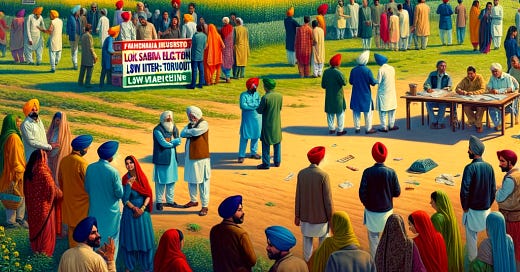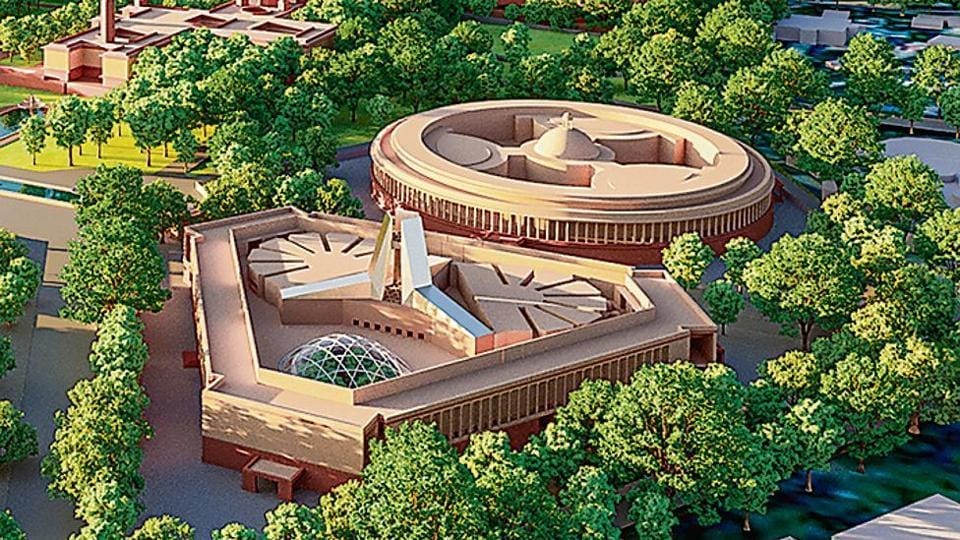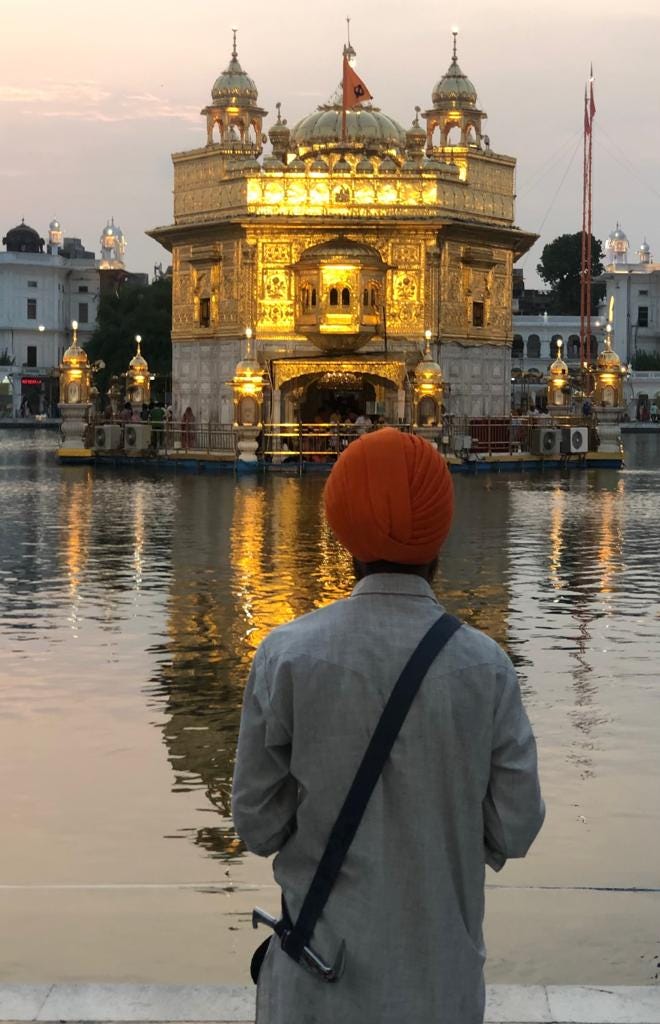Introduction: Low-key Four-Cornered Contests in Punjab
Punjab, with its 13 Lok Sabha constituencies, is on the threshold of experiencing a credible four-cornered contest for the first time in many decades. The prospect of alliances between major political parties such as SAD and BJP, as well as AAP and the Congress Party, has been conclusively dismissed, setting the stage for these quadrangular battles. This development necessitates that the four parties scout for effective candidates, totalling 52 individuals endowed with the necessary capacity, resources, and public traction to undertake the electoral battle in Punjab's Lok Sabha elections, slated for the last phase on the 1st of June.
Election Dynamics: The Low-Key Nature of the Contest
Despite a few staunch proponents of alliance culture holding out hope for seat adjustments, it is evident that each of the four major political parties will field separate candidates across the 13 constituencies. As Punjab gradually shifts into election gear, with several candidates, notably from the BJP, actively campaigning, the electoral atmosphere is anticipated to be subdued. It is our considered viewthat this election cycle will be characterized by low interest, low turnout, and narrow victory margins. The determining factor is likely to be the ability of candidates to mobilize the maximum number of supporters on election day.
What might contribute to this anticipated low voter engagement?
Fragmentation and Candidate Challenges in Punjab's Political Terrain
Firstly, Punjab's political landscape is notably fragmented, making it highly unlikely for any single party to dominate all 13 seats. Although the Congress Party appears to have a marginal advantage on paper, even its most optimistic supporters predict a cap of 5 to 6 seats in its favour, with the balance expected to be evenly split among the other three competitors. However, the Congress high command's delay in formally announcing its candidates in Punjab poses a significant challenge. Candidates find themselves in limbo in New Delhi, vying for nomination instead of canvassing in their respective constituencies. This scenario could hinder their on-ground campaign efforts. Consequently, the electoral outcome in Punjab is not expected to notably impact the composition of the largest party at the Centre, where the BJP, under the leadership of Prime Minister Narendra Modi, is anticipated to secure a substantial majority, potentially exceeding 400 seats, or at a minimum, 370+.
Voter Engagement: The Role of Local vs. National Representation
Secondly, in Punjab, the electorate traditionally engages more with their local Members of Legislative Assembly (MLAs) for day-to-day issues, rather than their Lok Sabha MPs. This longstanding practice has resulted in a comparatively low level of public interest in electing MPs. The general populace's connection with Lok Sabha representatives is minimal, underscoring a broader trend of lower engagement with national-level politics in favour of more immediate local governance.
Political Perceptions and Career Considerations
Thirdly, a unique perspective prevalent among Punjab's political leaders views election to the Lok Sabha or Rajya Sabha as a form of political exile from state-level politics. This is particularly relevant for AAP Ministers contesting Lok Sabha seats, who face the prospect of relinquishing their ministerial roles upon victory. Given the unlikely scenario of AAP forming part of the central governing coalition, a win in the Lok Sabha elections could effectively end their tenure in state ministry. Similarly, influential Congress figures, eyeing significant roles in the anticipated 2027 state government, are hesitant to distance themselves from Punjab's political scene. These perceptions significantly dampen enthusiasm, further contributing to the expected low voter turnout.
BJP's Strategic Challenges and Electoral Dynamics
The BJP anticipated significant gains in Punjab, especially leveraging the devotional momentum generated within the Hindu community by the Ram Mandir consecration at Ayodhya. However, this enthusiasm seems to have diminished in the electoral realm, and with the formal severance of ties with SAD, the Hindu electorate expected more representative candidates from the BJP. The selection so far suggests a reliance on prominent Sikh candidates, with the exception of a strong Hindu leader from the Pathankot region for the Gurdaspur constituency. Post-farmers' agitation sentiments have further alienated the agricultural community from BJP, complicating the party's outreach in rural areas.
Notably, Taranjit Singh Sandhu, a former Ambassador nominated in Amritsar, faces challenges despite his notable familial connections to the Akalis. Similarly, Ravneet Singh Bittu's defection from Congress to BJP has not translated into anticipated support in Ludhiana, with dissatisfaction among the local BJP cadre regarding candidate selection. Maharani Preneet Kaur, alongside her husband, former Chief Minister Captain Amarinder Singh, now with the BJP, also encounters tepid enthusiasm in their traditional stronghold of Patiala. Attempts by Captain Amarinder Singh to ally with the Shiromani Akali Dal were unsuccessful, leaving significant challenges as the campaign progresses.
SAD's Strategic Shifts and Electoral Prospects
Sukhbir Singh Badal, liberated from the constraints of SAD's previous alliance with the BJP, has intensified discussions around a distinct "Panthic" agenda. Yet, it appears he has delegated much of SAD's political engagement to the Shiromani Gurdwara Parbandhak Committee (SGPC). This strategic pivot has not garnered significant support among the farmers and rural populace of Punjab, particularly in the Malwa region. The "Punjab Bachao Yatra" spearheaded by Badal seems to be perceived more as a political spectacle than a campaign yielding substantial outcomes. Furthermore, his recent health concerns have somewhat curtailed SAD's campaign momentum. In a notable development, the son and daughter-in-law— a Punjab cadre IAS officer who quit service— of Sikander Singh Maluka, a prominent SAD figure, have switched allegiance to the BJP, with the lady poised to contest from Bathinda. Such developments signal challenging times ahead for SAD in the electoral arena.
The SAD (Amritsar) Factor and Electoral Calculations
The SAD (Amritsar), under the leadership of former IPS officer Simranjit Singh Mann, known for his separatist leanings, alongside a tentative alliance with the BSP, presents an unpredictable element in the election. With three candidates already declared, including Mann’s own son for the Amritsar constituency, their potential to split votes in 10 or 11 constituencies could critically impact the final results, particularly in Amritsar. The Sangrur constituency also emerges as a focal point of interest, not least because of Simranjit Singh Mann's previous by-election victory there, but also due to Punjab Chief Minister Sardar Bhagwant Maan designating it as a key battleground for AAP, alongside Jalandhar. The ability of Mr. Mann to replicate his by-election success in Sangrur remains uncertain, as does AAP’s challenge in nominating a strong contender for Jalandhar, following the defection of their former MP to the BJP. The delay in candidate announcements, with promises of decisions by April 15, raises questions among voters about AAP's candidate selection process, potentially indicating difficulties in identifying suitable representatives.
Concluding Observations: Looking Beyond the Lok Sabha Elections
As the election campaign unfolds, with national dynamics influencing the political landscape of Punjab, it remains premature to forecast the Lok Sabha elections in the state with any degree of certitude. It's imperative to recognize that these results should not be used to extrapolate the dynamics of the next Punjab Vidhan Sabha elections scheduled for 2027. The Aam Aadmi Party (AAP), currently holding a significant majority with 92 out of 117 MLAs in Punjab, is expected to maintain its governance. However, the challenges AAP faces on a national level, particularly with Arvind Kejriwal's judicial custody and internal party issues, merit attention. Despite these factors, the forthcoming Punjab elections are anticipated to produce results that may not necessarily serve as a strong indicator for the political climate in 2027, which remains a primary concern for the electorate in Punjab.
As we said, this shall be a low- interest, turnout and margin election.








The irony of the democratic system in India is that whichever party gets 30-35% votes in Punjab would have maximum MP's in the state. It actually means 65% of the Punjabi electorate doesn't want them.